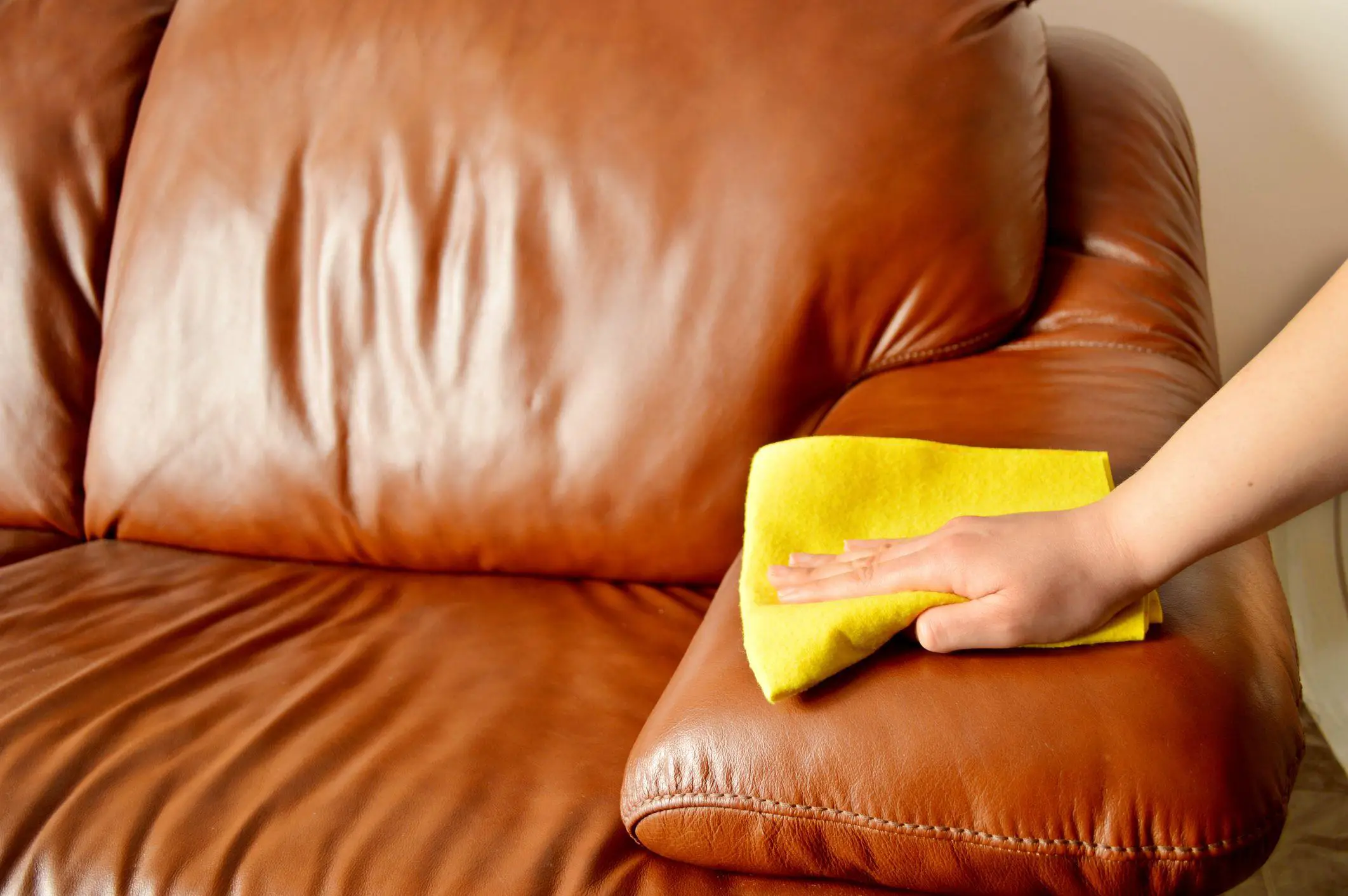Leather as used for furniture, desk tops, decorative panels and other features in a building is almost invariably what the tanner calls ‘light leather’. All leather comes from the hides of animals. The easily rotted keratin and globular proteins from the outside of the skin are removed by the treatment with alkalis and enzymes (liming) to leave a string net of collagen, the main structural material of skin. This collagen would itself rot if left to the action of bacteria, but it is tanned. This is a chemical modification which links the collagen molecules together and makes them less easily decomposed by bacteria and less easily penetrated by water.
Leather as used for furniture, desk tops, decorative panels and other features in a building is almost invariably what the tanner calls ‘light leather’. Tough leather, for the soles of shoes and similar purposes are tanned at a fairly high temperature using vegetable tannins, these are ‘heavy leathers’. Shoe uppers, furniture and most other decorative leathers are tanned cold using usually with compounds of chromium or similar metals.
Leather is this network of fibers and more like a textile than say a plastic sheet. It tends to absorb liquids in the same way as textiles do, and may give trouble with staining. The greatest danger to leather is dry heat and water .Temperature over moderately warm will tend to convert the collagen to much softer proteins resembling gelatin, and an irreversible damage takes place. The leather becomes shiny, brittle and usually darkens and begins to flake away.
Old leather such as found in antique furniture and book bindings may deteriorate in this way with alarming speed, so if leather gets wet it should not in any circumstances be dried by artificial heating. The best way to avoid penetration by water is to dress the leather with a good wax polish or with saddle soap. Light leathers are usually lubricated with an emulsion of oil (fat liquoring) during manufacturing. But it tends to lose its effectiveness after some time, and waxy material will give the leather new suppleness and also make it less easily wetted.
Liquid waxes are quite suitable but a saddle soap containing 10% soap and 30% wax (carnauba, beeswax or other hard waxes mixed with neatsfoot oil) will give a better result for furniture or automobile upholstery.
Stains on leather are difficult to remove without damage to the material itself.
- Ink and rust maybe lightened with a jelly made from sodium citrate (2 and a half ounces to a pint of water) and enough cellulose wallpaper paste to give a suitable consistency to stop the solution from running.
- Ball point pen ink can be removed with alcohol though it may be necessary to go over the area with wax polish (feathered out) to conceal the defaulting effect of spirit.
- Tar, rubber, fresh paint and similar materials can be removed with white spirit but again the patch needs to re polished to restore it to its pristine( perfect) state.
Leather, Leatherites, Rexines
For daily & weekly cleaning: dust thoroughly to remove surface dust, paying attention to folds around buttons (of the furniture like sofa)
For spring or periodic cleaning:
- Remove surface dust by using dusters, or an electric vacuum cleaner.
- If very slightly soiled, wipe the surface with a cloth wrung out of warm soapy water.
- If dirty, rub with a mixture of oil & vinegar (oil: vinegar :: 2:1).
- If very dirty, wash with warm water. Use a fennelette. Rinse thoroughly & dry. Polish, using a little furniture polish or cream



